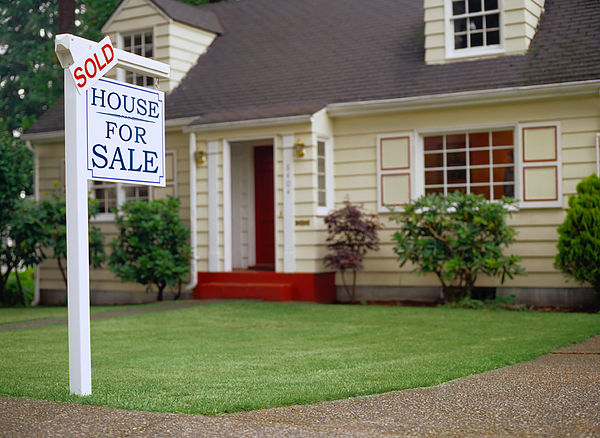Introduction
Why do stock prices fall? It’s the same as asking “Why do stock prices rise?” Stock prices rise and fall based on the assessed value of a company on a given day, at a given moment. Sometimes prices of stocks are high because of speculation or greed crowding into the market. Sometimes prices are high because companies are operating in a more favorable market, making more money, and are more valuable as a result. Prices can also fall because of speculation, or fear fleeing out of the market. And, they can fall because companies are operating in a less favorable market, making less money, and are less valuable as a result. However, we don’t worry and should not worry about day to day or even week to week movement in the market. We need to be worried about the quality of the investment, the price at which we buy, and the price at which we sell. We also need to be worried about whether or not we’re investing in a way that is appropriate for our age and our goals. When discussing this with clients, I like to compare it to owning a house
Here are some points that need to be covered before going into this:
1. Equity
- What do you call the portion of your house that you own? Equity.
- What are stocks called? Equities, and each share you own represents the portion of equity you own in that company.
2. Home equity vs. leveraged home ownership
- If your house is paid off, then you have 100% equity.
- If you have a mortgage or a home equity loan, then your home ownership is leveraged.
3. Public equity (stocks) vs. leveraged public equity
- If you purchased all your stocks with cash, then you’d own all your stocks out right.
- If you purchased your stocks using some margin (a loan) then your stock ownership is leveraged.
4. When you sell a house
- If you sell a house that has appreciated in value and still have a mortgage, then you keep the gains in value (less cost to sell). You pay the mortgage back to the financial institution.
- If you sell a house that has appreciated in value and you own that house out right, then you keep all the total proceeds of sale (less cost to sell).
- If you sell a house that is worth less than what you owe to the bank, then you’d have negative equity and may have to come up with the difference between the value of the home and the amount of the loan. You’d be “underwater.”
- If you sell a house that is worth less than it was worth when you bought it, then you accept a loss but still receive all the proceeds of sale (less cost to sell).
5. When you sell a stock
- If you sell a stock that has appreciated in value and you bought it using margin, then you keep the gains in value (less cost to sell). You pay the margin back to the financial institution.
- If you sell a stock that has appreciated in value and you own the stock out right, then you keep all the total proceeds of sale (less cost to sell).
- If you sell a stock that is worth less than your margin amount, then you’d have negative equity and may have to come up with the difference between the value of the stock and the amount of the loan. You’d be “underwater.”
- If you sell a stock that is worth less than it was worth when you bought it, then you accept a loss but still receive all the proceeds of sale (less the cost to sell).
My House
When I drive up to my house at the end of the day, I open the garage, park the car, put the garage door down, get out of the car, walk into my house, change clothes, and start dinner. In the mornings I wake up in my bedroom, walk to my bathroom, get ready, grab a Red Bull or a coffee, tell my son to find his backpack, get back in the car, and leave. On the weekends it’s not uncommon for me to spend 48 hours straight in my house, maybe only leaving to take my son to gymnastics or to go on an ice cream run. Whether I’m inside or outside of my house I never think about the value of it. It is my shelter. It stores my stuff. It’s where my family sleeps, eats, and lives.
My House In the Year 2049
Imagine that in the year 2049 I’m living in the same house I have now. I’m 65 years old and I have 20-30 years left to live. I start thinking about downsizing. My house has appreciated in value over the last 30 years. I’ve had to spend money to keep it from becoming run down, and I’ve paid ridiculously high property taxes and homeowners insurance every year, but that’s the norm in my area. Let’s say that my $400,000 home becomes worth $900,000. Over that 30 years I have spent $945,000 in upkeep, property taxes, and insurance. I had a place to live, so it was worth it. But now, I want to sell my house. I want to spend $400,000 to buy a patio home for retirement and really need to keep the other $500,000 to add to my retirement savings.
Let’s also imagine that by the year 2049 technology has drastically improved, as it does. The “internet of things” has gone wild. I have Google glass for a windshield in my self-driving car. When I activate the Google glass, I can see a hologram of my estimated home value blinking above my roofline every time my car drives me into the driveway. Recently, the housing market has started to decline and one day I notice that I should have put the house on the market sooner. My home’s estimated value is now $810,000. That’s $90,000 less than the month before. A 10% decrease. Wow. It’s really dropped.
Evaluating the Need To Sell My House
At the age of 65, I would have to do an analysis. How badly do I need to liquidate to access the equity in my home? Do I have other resources to live? Can I afford to keep living here and wait for the housing market to come back? What has changed in the area? Is it still a good and desirable place for people to live? Do I think that demand for homes in my neighborhood and city will come back? Is my house up to date enough to compete with other homes?
In the year 2049, if I feel like my neighborhood and town are still a good and desirable place to live, and if I think the housing market will bounce back in the next couple of years, and if I have enough retirement savings to get me by, then I can wait it out. There won’t be any real rush to leave. I can wait for the value to rise again. In the meantime, if I activate my Google glass windshield every time I’m leaving or returning to the driveway, I might feel some emotions watching the estimated value of my home change—moving up and down all the time.
If I conduct the same evaluation of my home, neighborhood, and larger community, and I find that my home value might not bounce back then I may want to go ahead and accept that I can sell it for $810,000. Or, if I can’t afford to wait, and really need to downsize because I need the liquidity now, then I can sell it based on my own needs and not based on the market. I’m still accepting less but based on my evaluation the need for liquidity was more important.
Starbucks: An Illustration of Economic Peaks and Troughs
I’m a caffeine junky. It fuels me through the day. It’s entirely possible that I’m asleep right now and only typing this because “caffeine.” Once a week, it’s a treat for me and my son to go to Starbucks and buy something. The rest of the time I make my coffee at home. However, some people get Starbucks daily. They live for it. The economy is doing well right now and, other than the employees affected by the government shutdown, most people are earning money and have extra cash to spend. That’s disposable income—the stuff that doesn’t pay for the necessities of living, but instead pays for your fun and extras. People can use that disposable income however they choose. For some people that means a lot of Starbucks.
According to textbooks, the economy goes in a continuous cycle, but that sounds like a circle. I like to think of it more as a wave with peaks and troughs, moving forward through time. If we’re at the top of the wave right now, then that means the next phase is the decline into the trough. It could take years to get there, or it could be accelerated by something else and happen faster. No one can tell you when it will begin—they can tell you when it began when they’re looking in the rear-view mirror. So, for the foreseeable future, people have extra cash to spend at Starbucks. That’s good for Starbucks, and good for their shareholders. It means the company is making money. If they’re managing their business well, not expanding too aggressively, and continuing to attract and retain customers, then the share price will reflect that. The price of individual shares will go up. So, one share reflects the same amount of equity in a more valuable company. If the unemployment rate goes up and/or wages decline, and people have less disposable income to spend on coffee, then they’ll spend less at Starbucks. Instead they’ll turn to alternatives, like making more coffee at home or grabbing a frozen coffee treat at McDonald’s instead. Starbucks’ price will decline. A shareholder with one share will still own the same proportion of equity in a less valuable company. If Starbucks is well managed through an economic trough, then they’ll come out the other side. Buyers of stocks will be able to get shares on sale, and they will benefit from buying shares at a lower valuation. When the economy heads back toward another peak, the shares will rise again. As inflation increases, technology advances, population rises, then productivity during economic peaks and troughs changes, and markets grow over time, even through the troughs. If Starbucks is poorly managed, then a significant trough could hurt the company. If too many competitors or alternatives enter the market, then that could hurt the company. (See what’s going on with Sears?)
Comparing the Movement of Stock Prices and Home Values: Our Emotional Responses
The point of all of this is that people can look at the prices of their stocks all day every day. We can even see stock market futures overnight. There are nights when the market behaves wildly then settles down or even rises during trading hours. There are trading hours when the market behaves wildly then settles down overnight. Most investors wouldn’t know this because most aren’t looking. But, when you look all the time, it’s a bit like my house evaluation in the year 2049. We don’t think about our houses this way right now because there isn’t an ever-changing hologram on the roofline, showing us red numbers when our home value goes down or showing us green numbers when our home value goes up. We also don’t think about our homes like this because it’s something tangible that we can touch and feel. It shelters us and provides immediate and constant utility. But, if I have a $400,000 house for 30 years and I have to pay $40,000 one year to replace the roof and update the kitchen to help it retain its value, then that’s equivalent to a 10% price decline in a quality stock. If I’m paying 3% in property taxes and 1% in homeowners’ insurance, then that’s like paying a 4% fee on my investment account. Most managed investments cost between 1% and 2%. For me to experience any gain in investment in my home, my home’s value must gain more than those costs every year. For me to experience any gain in my investment account, my account’s value must gain more than the cost of fees every year.
Evaluation Using Rational Yard Sticks
We should be constantly evaluating investment choices but evaluating them against rational yard sticks. It’s irrational to sell a stock or investment just because the value has gone down. It’s irrational to sell or buy based on speculation. It’s irrational to pile in because everyone else is and you’re experiencing a severe case of FOMO. It’s rational to sell if your personal liquidity needs or time horizon has changed. That’s something that should be evaluated with your advisor at least annually. It’s rational to sell if your investment has changed in a way that makes it of lower quality. It’s also rational to hold an investment through a downturn if it is maintaining quality of management but is only experiencing temporary declines in valuation due to the transition from an economic peak to an economic trough, as long as it still fits your investment model and your personal needs. A house is the same, and you’d think about it similarly if it had a blinking hologram of its value on the roofline.
What Should Our Concerns Be?
We shouldn’t be asking the question of why the entire stock market has declined or why it has gone up. It’s more important to recognize that the behavior of the market is normal, and to make sure that you’re already positioned based on your risk tolerance, liquidity or income needs, and overall goals. Think about your investments for what they are. If you have too much equity and are participating in too much of the market turbulence, there are changes in positioning that can alleviate that in the future, such as by mixing in bonds or precious metals. You won’t enjoy the full upside of the market if you make those changes, but it might be more appropriate for you.
Remember the house. Remember to evaluate the investments. Remember to evaluate your personal goals and needs. Remember to measure using rational yard sticks.


